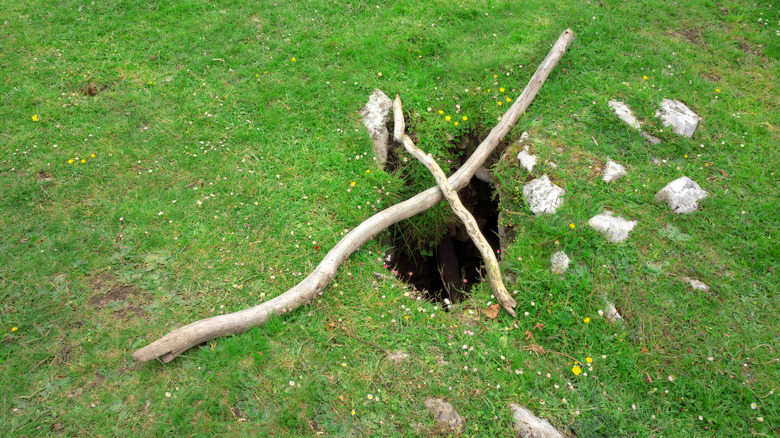How To Create A Visible Ground-To-Air Signal If You're Lost In The Woods
While it is always best to prevent getting lost in the woods, there are times when the unthinkable happens. In fact, statistics show more than a dozen people get lost in the woods every day in the United States. If you happen to find yourself being one of the unfortunate ones who becomes lost and has to rely on signaling for help in order to be found, don't forget there is a chance that help may come from above. No, not in a divine manner, but in the form of an air search party or aircraft randomly passing overhead. So, it is important to know how to create a visible ground-to-air signal if you're lost in the woods.
Successfully signaling passing aircrafts, whether they are actively searching or just crossing over your location while enroute to theirs, can very well make the difference between being found relatively quickly and remaining lost in the woods. The vantage point of helicopters and airplanes allows them to see things ground-based searchers may miss. However, the altitude from which they are looking also presents some challenges when it comes to getting the attention of eyes in the air.
The potential need to signal an aircraft is one of the primary reasons for carrying a signal mirror in your emergency supply pack. A Coughlan's sight-grid signal mirror or similar reflective item is one of the best ways to signal aircraft during daylight hours. Using handheld signal flares is a good way to get the attention of aircraft at night, too. While these items can help get the attention of passing planes you see or hear, in order to increase your odds of getting found, it is a good idea to create a signal using whatever is available to you and which can work even when you aren't in a position to respond and actively signal.
Make sure your signal can be seen
The most important thing to remember when making an effective ground-to-air signal is it must be visible from the air. This affects both the location and size of your signal. With this in mind, the first thing to do is find a relatively open area. This area needs to not only be open at ground level, but open to the sky. In other words, not obscured by a canopy of trees, overhanging limbs, or other obstructions.
Once a suitable location has been found, it is time to go about creating a signal. It may be as simple as drawing a large — 12 foot or more — X or SOS in sand or snow. These same symbols can be created out of natural materials such as logs or rocks. Clothing, as well as camping and hiking supplies can also be used to form these signals. You can also build signal fires that will show light at night and smoke during the day. If building fires for the purpose of signaling, build three in the form of a triangle if possible, as three is the international signal for distress.
If you are familiar with specific ground-to-air signals, you can spell those out as well. For example, Roman numeral I means someone is seriously injured and needs a doctor, while Roman numeral II signals there is a need for supplies. An X means you are unable to continue or move any further. However, there is no need to stress if you don't remember specific signals, as creating anything that will stand out from the natural environment should get you attention overhead. To that end, in addition to creating an X or SOS in the ground, scattering or hanging brightly colored clothing and other items can help rescuers locate you.

